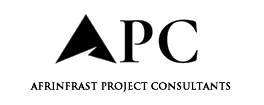
Specifications are essential to defining materials, performance and responsibilities on a project, yet many architects lack training in writing these key documents. Dr Stephen Hamil, innovation director at NBS, discusses a new guide he has authored on putting together strong specifications
In the fast-paced world of construction, specifications are the unsung heroes that keep projects on track. They serve as detailed instructions ensuring quality, compliance and smooth stakeholder collaboration.
Yet, many professionals enter the field without formal training in this essential skill. To help address this gap, NBS has launched The Best Practice Guide to Specification Writing, a comprehensive resource designed to standardise and elevate specification writing across the industry.
In this article, I’ll dive into some of the key dos and absolute don’ts when it comes to crafting the perfect specification.
Why specifications matter
Specifications are more than just technical documents; they are the blueprint for project success. They define materials, performance, execution and responsibilities, ensuring everyone is aligned with the same goals.
However, it’s important that the method to achieve the desired performance or outcome is clearly specified, rather than leaving it to the contractor’s discretion. In addition, specifications should not only reference performance levels but also establish clear standards to ensure consistency and compliance.
Poorly written specifications can lead to costly delays, disputes and compliance issues. With the Building Safety Act raising the stakes, precise and well-defined specifications are now more crucial than ever.
Dos for writing effective specifications
Clarity is king: Clarity lies at the heart of effective specification writing. The best specifications use simple, direct language that leaves no room for misinterpretation. A useful principle to follow is the Seven Cs: Clear, Concise, Correct, Complete, Comprehensive, Consistent and Coordinated. These qualities ensure your documents are straightforward and aligned with the broader scope of the project.
For example, vague instructions like “provide some spare tiles” can lead to confusion and delays. An accurate, more useful directive would be: “Provide 20 spare tiles of each type used.” Such clarity helps everyone on the team, from contractors to suppliers, understand exactly what’s required.
Consistency through classification: Using a structured classification system, such as Uniclass or CAWS, brings consistency to your specifications and aligns them with the rest of your project documentation. These systems help organise information methodically, making it easier to manage across teams and over time. Consistency isn’t just a formatting preference; it’s a vital part of reducing errors and streamlining collaboration.
Assigning responsibility: The Design Responsibility Matrix establishes who is responsible for various aspects of the design. When design responsibilities aren’t clearly defined, misunderstandings can arise, causing delays or costly rework. To avoid this, clearly indicate the level of detail using Descriptive (D) or Prescriptive (P) terms.
This transparency ensures that all stakeholders designers (such as architects and engineers), contractors and specialist subcontractors are clear on their specific responsibilities. This transparency ensures that all stakeholders – engineers, consultants, contractors and subcontractors – understand where their responsibilities begin and end.
Coordinating across documents: Specifications don’t exist in isolation; they must align with other project documents, drawings, schedules and digital models to ensure the design remains cohesive.
Building Information Modelling (BIM) is a modelling process supported by software tools that play a crucial role in this alignment. While updates may trigger alerts in real time, information typically undergoes careful review and judgment before being passed between systems, ensuring accuracy and consistency as the project evolves.
Managing change effectively: As projects progress, change is inevitable. That’s why having a robust change management process is essential. Every modification should be precisely documented so that all parties are on the same page.
Failing to track changes can result in conflicting documents being used on-site, which increases the risk of compliance issues, delays and disputes.
Don’ts for specification writing
Just as there are best practices to embrace, there are also key pitfalls to avoid. Ambiguity is a major one; vague language leads to differing interpretations and often results in rework or legal complications.
Similarly, mixing classification systems or failing to develop specifications that reflect the design responsibilities can throw entire projects off course. Specifications citing outdated standards and practice are another risk; and if documents aren’t updated in line with drawings or models, serious construction errors can occur.
Bridging education and industry practice
NBS’s guide makes this easy for both students and professionals. It offers a comprehensive framework for creating precise specifications while emphasising consistency across methods and platforms designed by experts in the field.
Writing effective specifications is not just about technical accuracy; it’s about crafting a blueprint for success. By embracing these dos and don’ts, and leveraging resources like the Best Practice Guide, you can transform your projects from simple blueprints into seamless, thriving successes.
Whether you’re a seasoned architect or a student entering the field, developing strong specification writing skills will set you up for success in today’s fast-paced construction
landscape.
The post The blueprint for success: The dos and don’ts of effective specification writing appeared first on Planning, Building & Construction Today.

